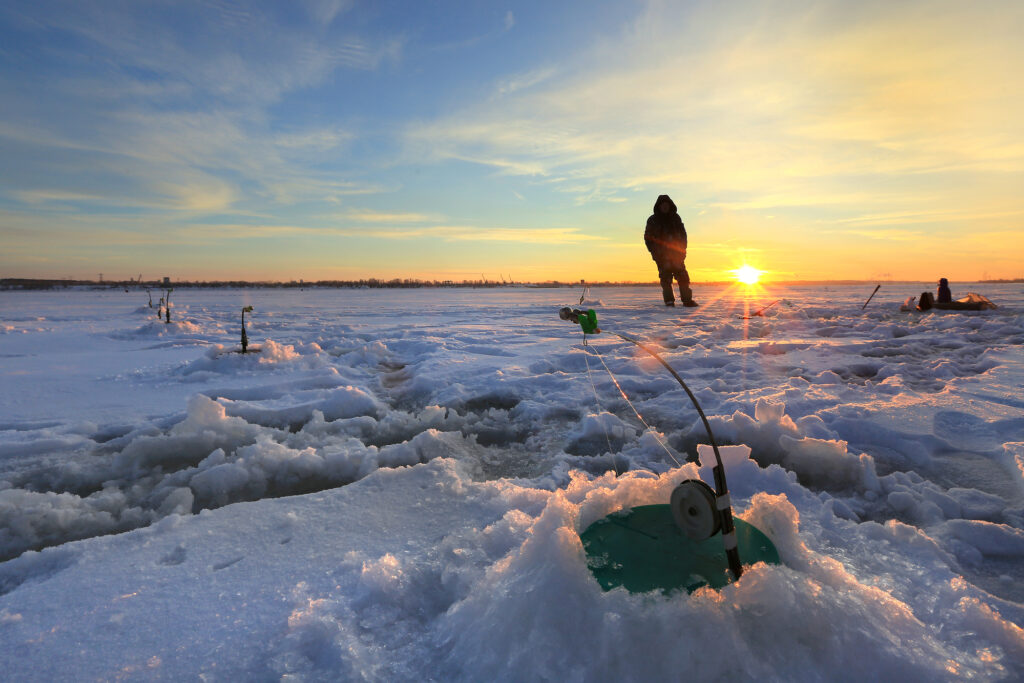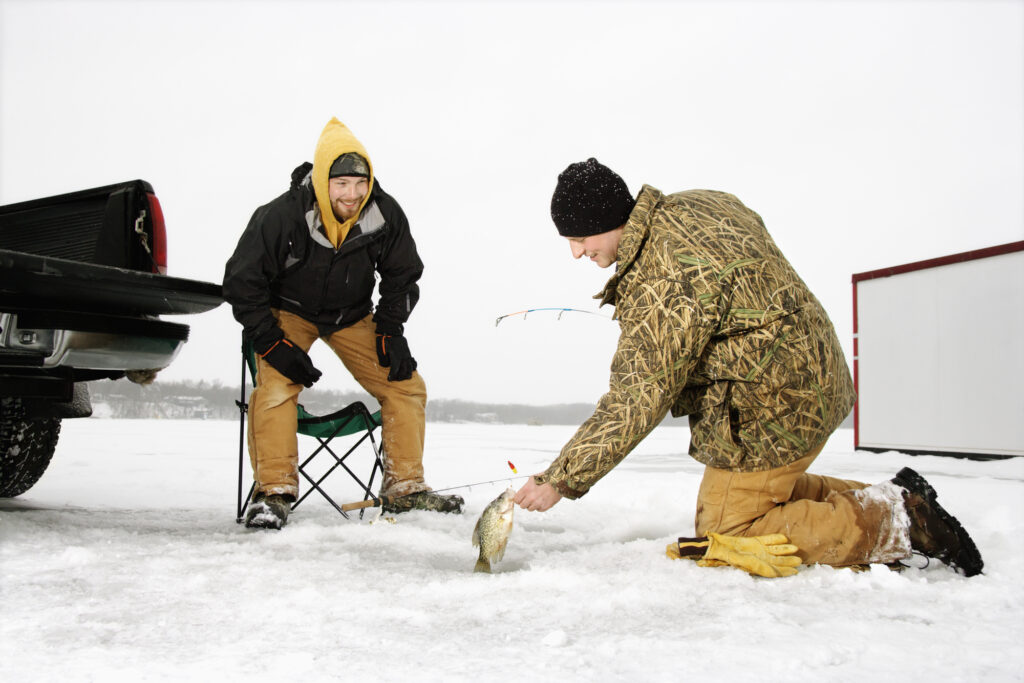Bait choice is crucial to any successful fishing trip. When it comes to ice fishing, this reigns true as well. Before you go out into the harsh cold and slippery ice, what is the best bait for ice fishing?
Live bait is best for ice fishing. It captures the attention of fish underneath the ice and gives off a natural scent that further attracts them. Non-live bait, such as jigs and other lures, mimic the movement of live bait and work as well.
There are many variables when ice fishing and having understanding of the different baits that work will only help your chances of catching more fish this year.
What Is The Best Bait For Ice Fishing?
Live baits will likely catch the fish’s attention under the ice. Having a couple of different types with you can be helpful, as you can alternate depending on which fish you want to catch.
Live bait that wiggles around or jiggles seem to get swimming fish to stop more than artificial bait.
Worms And Larvae
Multiple types of worms and larvae work well when ice fishing. These include fly or mayfly larvae, also known as spikes or wigglers, and wax worms. Maggots, nightcrawlers, and mealworms are also good choices for bait.
If you make a small incision in the worm, the smell travels farther through the water, potentially bringing more fish towards the bait.
Small Fish
Little fish like minnows and smelt attract fish when ice fishing, as the motion tends to grab the attention of fish swimming about looking for food.
Fish Eggs
Fish eggs are an effective bait for fish since many fish will naturally eat a nest of eggs if they swim by them. Salmon eggs seem to be a favorite for many fish you can catch while ice fishing.

Can Non-Live Bait Work For Ice Fishing?
You can still have a successful catch on the ice without live bait, so long as you have the right non-live bait and lures. Sometimes, you might not have a choice but to use either artificial or non-live bait when ice fishing.
This is because some regions won’t allow live bait when fishing. You should also research the area you’re planning to fish at to determine whether or not you’re allowed to use live bait, and if you can, what type of live bait is permissible.
Using artificial bait can be easier for some, as live bait needs to be stored and taken care of as you bring it along on your fishing excursion. With artificial bait and lures, they just need to be stored in a tackle box, and they can sit around until you plan to use them.

Which Fish Like Which Kind Of Bait?
You may want to select the bait you bring ice fishing based on your desired catch and their known preferences. For instance, larger fish like pike seem to prefer live bait such as minnows, though you can find artificial ones that work well.
Walleyes can be attracted fairly easily by non-live bait, so long as the bait and lure, both have a decent amount of movement. Trout can often be attracted to a fishing line with some worms. How Do You Jig For Walleye in the Winter? details more specifics on catching Walleye while ice fishing.
What Are The Best Lures For Ice Fishing?
In terms of lures, you’re bound to be lucky when using jigs, as their motion seems to lure in fish under the ice pretty well. A teardrop jig seems to be the best shape that attracts these fish. Jig lures are especially effective if you use non-live bait for ice fishing.
A lure that has some kind of vibration or jiggling ability is highly recommended, regardless of what type of lure you choose. This is especially true when using artificial bait because it doesn’t create that movement that tends to lure in fish.
How Do You Attract Fish While Ice Fishing?
To attract fish while ice fishing, it’s important to know a few key things.
For one, what depth are the fish you are after swimming? Earlier in the season, the fish are often in shallower waters (usually 10′-30′), but as the ice fishing season gets on, they swim to deeper areas. Our article What Depth Should I Ice Fish for Walleye? talks about how walleye change their depth depending upon where the bait fish are.
Another consideration is what fish you are going after. Ice fishing for pike can be much different than fishing for perch. They are different sizes, have different diets, and because of these things, will be attracted to different types of bait and lures.